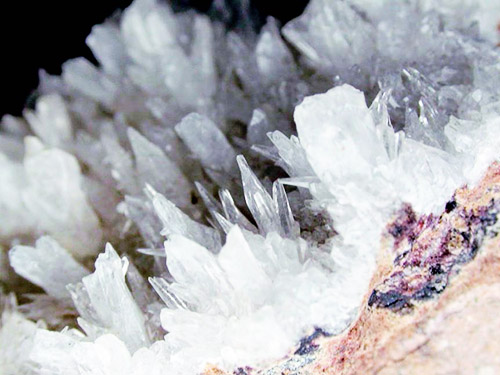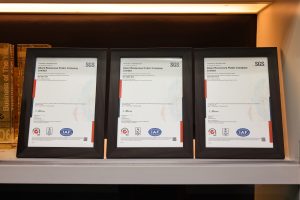The world around us is full of natural wonders, and rocks and minerals are among the most fascinating.
These timeless materials have shaped our planet and continue to provide essential benefits in our daily lives. At the Chatree Gold Mine, we invite you to explore the captivating world of local rocks and minerals. Discover the various types of rocks, understand their unique properties, and learn about the benefits they offer—including insights into which rocks may even contain gold ore.
Understanding the Story of Rocks and Minerals: How Are They Formed?
Rocks and minerals are critical components of the Earth’s crust, serving as the raw materials for numerous industries and forming the foundation of natural resources. They have also played a significant role in human culture and belief systems throughout history.
Minerals
- Formation: Minerals form through geological processes such as the crystallization of magma, sedimentation in water, or the transformation of existing minerals under high pressure and temperature.
- Importance: These naturally occurring substances are essential for various industrial applications and contribute to the overall health of our ecosystem.
Rocks
- Formation: Rocks are formed by the combination of one or more minerals over extended geological periods.
- Types of Rocks:
- Igneous Rocks: Created from the cooling and solidification of magma beneath the Earth’s surface or from lava expelled during volcanic eruptions.
- Sedimentary Rocks: Formed through the accumulation and deposition of mineral sediments over time.
- Metamorphic Rocks: Developed from the transformation of existing rocks under intense heat and pressure, resulting in new crystalline structures.
Additionally, the processes that form rocks and minerals often repeat, creating a continuous cycle known as the Rock Cycle. This cycle drives the formation of various rock types based on the prevailing time period and environmental conditions. Consequently, rocks and minerals play a critical role in geology by helping us understand the Earth’s evolving surface and the natural resources available across different eras—insights that are essential for human development.
Explore the Mine with Us!
Discover 5 Types of Rocks and Minerals Commonly Found Near the Mine
1. Calcite

Appearance: Calcite is a calcium carbonate (CaCO₃) mineral commonly found in limestone, chalk, and various metamorphic rocks. It appears as transparent or opaque crystals, typically ranging in color from white to pale yellow. Calcite often forms thin sheets or triangular crystals and effervesces when exposed to hydrochloric acid. At the Chatree Gold Mine, calcite is present in quartz veins that host gold ore, cutting through volcanic rocks.
Uses of Calcite:
- Cement Industry: A primary component in limestone used for building materials such as concrete and roads.
- Chemical Industry: Essential in producing calcium oxide (CaO), also known as quicklime.
- Decorative Applications: Used in marble for flooring and surface cladding.
- Precision Equipment: Integral to the manufacturing of polarizing microscopes.
- Laser Production: A key mineral in producing laser light.
2. Magnetite
Appearance: Magnetite is an iron oxide mineral (Fe₃O₄) commonly found in igneous rocks formed through crystallization. Typically black or dark gray, it possesses strong magnetic properties that allow it to attract and be attracted by magnets, making identification simple with a magnet. Magnetite is a vital ore used in the production of iron and magnets in various industries.
Uses of Magnetite:
- Iron and Steel Production: Integral to the iron smelting process for making high-quality steel.
- Magnet Manufacturing: Essential for producing magnets used in electrical appliances, such as electric motors.
- Geological Research: Valuable for scientific studies and applications in the mining sector.
3. Pyrite and Gold Ore – Similar Yet Different
Pyrite and gold ore often cause confusion due to their similar external appearance, making them hard to distinguish. However, there are distinct differences between these minerals.
Pyrite
Appearance: Pyrite is a sulfide mineral composed of iron disulfide (FeS₂) and typically forms in cubic crystal shapes. Its golden or yellow-gold color closely resembles gold. However, when tested by scratching it against ceramic or tile, it leaves a dark green or black streak—a characteristic that sets it apart from real gold. This distinct streak is why pyrite is often called “fool’s gold.” Despite its deceptive look, pyrite is an important sulfur ore and a precursor in the production of sulfuric acid.
Uses of Pyrite Ore:
- Sulfuric Acid Production: Used in various industries to produce sulfuric acid, an essential chemical.
- Dye and Ink Manufacturing: Acts as a precursor in the production of dyes and inks.
- Wood Preservation and Disinfection: Employed in treatments to preserve wood and as an effective disinfectant.
- Solar Cell Components: Utilized in the manufacturing of solar cells for renewable energy.
- Alternative Iron Ore Source: In regions with limited iron oxide sources, pyrite serves as a substitute for iron extraction.
Gold Ore
Appearance: When asked, “Which rock contains gold ore?” the answer is that gold can be found in nearly all types of rocks. Gold ore is a mineral with a metallic yellow luster, typically appearing in flakes or rounded lumps. When scratched against ceramic or tile, it leaves a yellow streak and has a ductile texture. Extracting gold from gold ore requires expertise, involving both chemical and physical processes to separate the gold. At Chatree Gold Mine, for instance, gold ore is found in quartz-calcite-sulfide veins containing micron-sized gold, which intrude into volcanic sedimentary rocks, specifically andesite.
Uses of Gold Ore:
- Jewelry & Investment: Used in the production of jewelry, coins, and gold bars for value preservation.
- Financial & Trading: Used as collateral in international currency trading.
- Industrial Applications: Found in dental tools, scientific instruments, electronic circuits, and aerospace equipment.
4. Petrified Wood
Appearance: Petrified wood is a unique type of rock that retains the natural patterns and grain of wood, resembling its original form. Over time, the cellular structure of decaying wood is gradually replaced by minerals—mainly silica (SiO₂)—through a process known as mineralization, which can take hundreds to thousands of years. The resulting stone displays a variety of colors, influenced by different minerals:
- Green or blue – Copper or chromium
- Black – Carbon or manganese oxide
- Red, yellow, or brown – Iron oxides
Uses of Petrified Wood:
- Decorative Applications: Used in jewelry making, home decor, and artistic sculptures.
- Geological Research: Helps scientists study Earth’s historical climate and environmental changes.
- Paleobotany & Fossil Studies: Provides insight into ancient plant life and prehistoric ecosystems.
5. Quartz
Appearance: Quartz, also known in Thailand as “Hanuman’s Tooth,” is a mineral composed of silicon dioxide (SiO₂). It typically forms long, pointed crystals with a glass-like luster and comes in various colors, including clear, white, purple (amethyst), pink (rose quartz), and yellow (citrine). Quartz originates from the weathering of igneous rocks and is a major component of granite, sandstone, and quartzite.
Uses of Quartz:
- Electronics & Technology: Essential in computer chip manufacturing and solar cell production.
- Jewelry & Gemstones: Popular in jewelry-making, including amethyst, rose quartz, and clear quartz.
- Glass & Construction: Used in the production of quartz stone, tiles, and high-quality glass.
- Scientific Instruments & Optics: Found in lenses, prisms, and precision microscopes.
Master K EP. 2 Ordinary Stones, Extraordinary Impact
As you can see, the five minerals discussed—gold ore, magnetite, pyrite, petrified wood, and quartz—are far from ordinary. They serve essential roles across various industries, from construction and energy production to scientific research, technology, and jewelry-making.
The world of rocks and minerals holds fascinating stories and hidden wonders waiting to be explored. By understanding their origins and applications, we gain a deeper appreciation of the natural treasures around us. So, open your mind, explore the beauty of geology, and discover how ordinary stones can hold extraordinary secrets!
References:
www.dmr.go.th/magnetite
www.dmr.go.th/calcite





